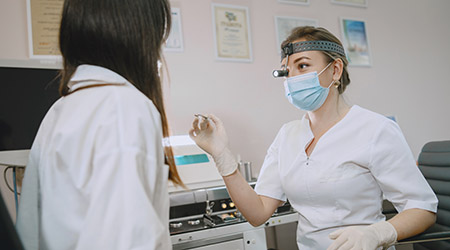Digital health continues to transform healthcare, according to results from the 2021 CHIME Digital Health Most Wired survey, and the changes are likely to have a tremendous impact on the priorities of facilities managers in hospitals and other healthcare facilities.
Patient engagement shows significant gains this year, with patients adopting digital portals, mobile apps and electronic insurance cards in ever-increasing numbers. Interoperability and price transparency also gained ground with wide adoption of digital solutions across the industry.
Among the survey’s key findings:
2021 saw a gain of 19 percentage points in organizations adopting the ability to estimate patient out-of-pocket expenses, attributable to CMS’ new proposed requirements for price transparency.
Percentages of patients using digital portals, mobile apps, real-time news and blog feeds and electronic insurance cards all grew significantly.
Usage and adoption of telehealth continued to increase on the whole, but the growth curve stabilized from the sharper curve of 2020. Reported usage measured by percentage of patients who used telehealth at each facility has more than doubled since 2019.
Population health management (PHM) activities remained steady after a boom in growth in 2020, with 2021 showing an average increase of 1-4 percentage points in the use of tools to support PHM strategies compared to an average 18 percentage point bump in 2020.
Adoption of advanced analytics continues to spread through the industry. The use of predictive analytics in clinician workflow rose by 11 percent in 2021 for acute care organizations.
Adoption of opioid-use reduction technologies slowed in 2021, up by only 3 percent compared to the 20 percent gains of 2020. But more than one-third of organizations surveyed report using 10 or more interventions to reduce opioid use, and data shows a positive correlation between number of interventions and the impact on use reduction.
Cybersecurity measures remained consistent in growth from 2020 to 2021. Organizations with a dedicated security operations center grew by 4 percent. The least-adopted best practice is the appointment of a designated CISO in the executive suite, as only 60 percent of organizations report having a security officer at that level.
Adoption of EHR-integrated surveillance systems rose by 8 percent in 2021 for a total growth of 19 percent since 2019.
COVID-19-related technologies measured through the survey remained strong, with more than 90 percent of acute care organizations able to report data on vaccination and testing through their EHRs to local, state, and federal agencies. More than 86 percent of acute care and ambulatory organizations have adopted an enterprise-wide patient flow system, with high adoption in critical areas serving a beneficial role during the pandemic. Digital tools for contact tracing are still rare but increasingly planned for future implementation.

 Building Disaster Resilience Through Collaboration
Building Disaster Resilience Through Collaboration Amae Health Expands to New York City
Amae Health Expands to New York City Hospital for Special Surgery Opens Two New Facilities in New Jersey
Hospital for Special Surgery Opens Two New Facilities in New Jersey Should We Be Testing Toilet Water in Patient Restrooms?
Should We Be Testing Toilet Water in Patient Restrooms? Healthcare Union Petitions for Increased Staff Safety at HCA Florida Hospitals
Healthcare Union Petitions for Increased Staff Safety at HCA Florida Hospitals